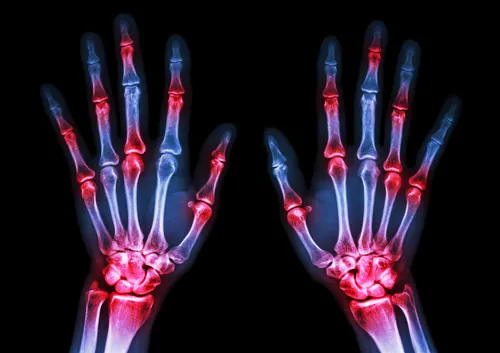
Breakthrough in Medical Imaging: Dana-Farber Scientists Unveil Revolutionary PET Probe to Detect Inflammation with Unmatched Precision!
2025-01-24
Author: Siti
Breakthrough in Medical Imaging: Dana-Farber Scientists Unveil Revolutionary PET Probe to Detect Inflammation with Unmatched Precision!
In an exciting advancement for medical diagnostics, researchers at the Dana-Farber Cancer Institute have unveiled what they are calling a “game-changing method” to detect inflammation within the body through positron emission tomography (PET) imaging. The innovative approach utilizes a specially designed probe targeting CD45, a protein marker present on all immune cells. This groundbreaking technology enables real-time imaging of key immune system organs, such as bone marrow, the spleen, and lymph nodes, while also highlighting inflammatory processes in affected areas like the colon.
Published in the prestigious journal *Nature*, this research holds the potential for far-reaching implications in diagnosing and monitoring a range of medical conditions, from autoimmune disorders to various forms of cancer.
What sets this new PET probe apart is its high sensitivity and specificity in detecting inflammation. The Dana-Farber team’s CD45-PET method rises above conventional techniques like 18F-fluorodeoxyglucose (18F-FDG), which often leads to false positives due to indiscriminate uptake by glucose-hungry cells. In contrast, CD45-PET hones in specifically on immune cells, leading to clearer images and more accurate identification of inflammation.
"As we improve our ability to visualize inflammation, we can differentiate it from other metabolic activities within the body," the researchers noted, heralding a new era in the diagnosis and management of inflammatory diseases particularly related to cardiovascular issues, cancer, and autoimmune conditions.
The CD45-PET probe’s operational mechanism involves targeting the CD45 protein, which is solely found on nucleated immune cells, offering a highly selective tool for monitoring immune responses and inflammation. Tests in inflammatory bowel disease (IBD) and acute respiratory distress syndrome (ARDS) models demonstrated that CD45-PET could accurately locate and assess inflammation severity. Remarkably, in IBD models, the probe effectively mirrored both histological evidence and clinical symptoms of disease activity.
A key advantage of CD45-PET lies in its extensive versatility; while traditional PET probes might be limited in their scope, CD45 appears across various immune cell types, empowering this probe to track numerous inflammatory conditions. Moreover, it provides crucial insights on how inflammation evolves over time, making it an invaluable asset in long-term studies and treatment evaluations. This capability enables researchers to analyze real-time inflammation responses to treatment, paving the way for innovations in personalized medicine.
Eager to transition from animal models to human applications, the team has developed a human iteration of the CD45-PET probe. Initial tests in humanized mice suggest that it holds significant potential for human use, capable of early detection of inflammation and informing treatment decisions.
The clinical possibilities don’t stop there! CD45-PET presents promising advancements in diagnosing and managing complex conditions like graft-versus-host disease (GVHD), a severe complication of bone marrow transplants. In preclinical settings, this human CD45-PET probe has successfully tracked disease onset and progression, showcasing its ability to pinpoint inflammation accurately.
Moreover, the implications for cancer treatment could be transformative. Since inflammation can heavily influence tumor behavior, CD45-PET may assist clinicians in gauging the effectiveness of anti-inflammatory treatments or immunotherapies. Likewise, in conditions like IBD, the probe promises a more dependable assessment of treatment efficacy than current methodologies.
However, the researchers caution that CD45-PET is not without its limitations. The probe targets all immune cells, which means it does not differentiate between specific immune cell types—this could be crucial in certain diseases. Additionally, limitations in PET imaging resolution may hinder its ability to detect minuscule inflammation areas. Nonetheless, CD45-PET signifies a monumental leap toward the visualization and monitoring of inflammation across an array of health conditions.
With exciting prospects ahead, the team is gearing up to initiate clinical trials to validate the human CD45-PET probe, a pivotal step that could accelerate its introduction into clinical practice. “Once validated, CD45-PET could fundamentally transform how we diagnose and manage inflammation-based diseases, providing a straightforward, reliable approach to tracking inflammation throughout the body,” the team concluded.
Stay tuned as a new chapter in medical imaging unfolds, potentially revolutionizing how healthcare providers approach diagnosis and treatment!




 Brasil (PT)
Brasil (PT)
 Canada (EN)
Canada (EN)
 Chile (ES)
Chile (ES)
 Česko (CS)
Česko (CS)
 대한민국 (KO)
대한민국 (KO)
 España (ES)
España (ES)
 France (FR)
France (FR)
 Hong Kong (EN)
Hong Kong (EN)
 Italia (IT)
Italia (IT)
 日本 (JA)
日本 (JA)
 Magyarország (HU)
Magyarország (HU)
 Norge (NO)
Norge (NO)
 Polska (PL)
Polska (PL)
 Schweiz (DE)
Schweiz (DE)
 Singapore (EN)
Singapore (EN)
 Sverige (SV)
Sverige (SV)
 Suomi (FI)
Suomi (FI)
 Türkiye (TR)
Türkiye (TR)
 الإمارات العربية المتحدة (AR)
الإمارات العربية المتحدة (AR)